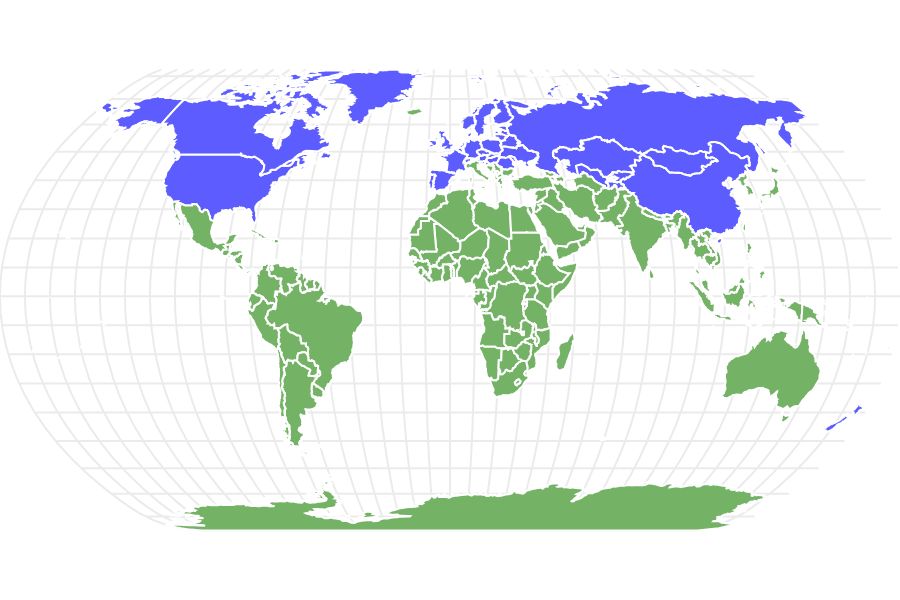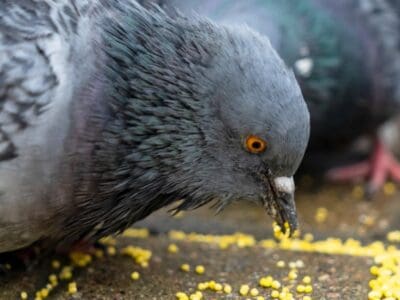Ermine
Mustela erminea
A very bold and ferocious predator!
Advertisement
Ermine Scientific Classification
- Kingdom
- Animalia
- Phylum
- Chordata
- Class
- Mammalia
- Order
- Carnivora
- Family
- Mustelidae
- Genus
- Mustela
- Scientific Name
- Mustela erminea
Read our Complete Guide to Classification of Animals.
Ermine Conservation Status
Ermine Facts
- Name Of Young
- Kits
- Group Behavior
- Solitary
- Fun Fact
- A very bold and ferocious predator!
- Estimated Population Size
- Unknown
- Biggest Threat
- Habitat loss
- Most Distinctive Feature
- Zig-zagging movement
- Other Name(s)
- Stoat or short-tailed weasel
- Litter Size
- Four to 18
- Habitat
- Woodlands and forests
- Predators
- Badgers, foxes, coyotes, eagles, owls, and weasels
- Diet
- Carnivore
- Favorite Food
- Rodents, shrews, rabbits, frogs, insects, birds, and eggs
- Common Name
- Ermine
- Location
- Europe, Asia, and North America
- Group
- Mammals
View all of the Ermine images!
Despite its small size, the ermine has a reputation as a fierce and territorial carnivore that can take on animals even bigger than itself.
The ermine is a type of weasel with a slender body that inhabits the temperate and arctic regions of Eurasia and North America. Also commonly known as the stoat or the short-tailed weasel, this species plays an important role in the ecosystem as both a predator and prey animal.

3 Ermine Facts
- The ermine is an animal with a rather luxurious coat of fur that has appealed to the upper classes of some societies for centuries. Ermine pelts reached the height of their popularity in 15th-century Europe when they signified power and status.
- One of the most famous paintings ever produced by Leonardo da Vinci is simply known as Lady with an Ermine. Dated between 1489 and 1490, it appears to depict an unidentified woman (possibly the mistress of the Italian prince who was employing Leonardo at the time) cradling a small ermine in her arms.
- The ermine is an animal that probably evolved some one or two million years ago. First arising in Europe and Asia, it crossed the Bering Strait and populated North America. The ermine’s resilient behavior allowed it to survive the last ice age.
Scientific Name
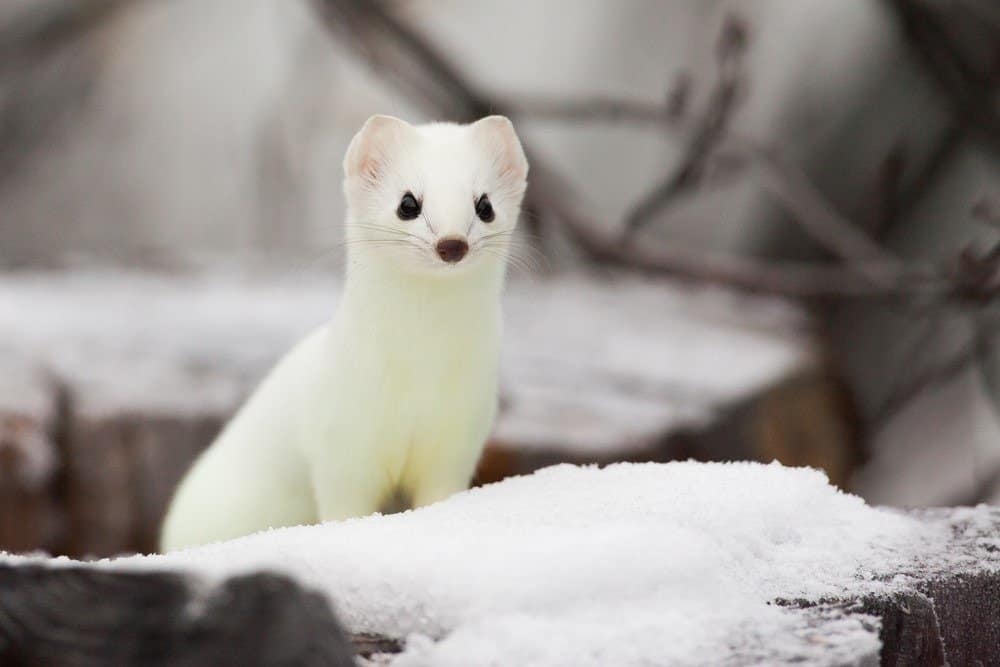
Short-tailed Weasel Mustela erminea in white winter fur at Simpson Lake, Yukon, Canada
©Jukka Jantunen/Shutterstock.com
The scientific name for the ermine is Mustela erminea. Mustela describes a genus of weasels, minks, ferrets, and polecats with similar physical characteristics and behavior. More distantly, it is related to badgers, otters, and wolverines in the family of the Mustelid. These Mustelids also belong to the order Carnivora. Due to its wide distribution around the world, the ermine has quite a lot of regional variation. Some 37 or so subspecies are found all over its natural range.
The names ermine and stoat, though they describe the same thing, have entirely different origins. Stoat seems to come from the Dutch word stout. The name ermine likely comes from an Old French word referencing its white fur, but it’s not clear where it originated before that.
Evolution
The ermine, or stoat, is a descendent of the Mustela palerminea, a frequent meat-eater found in eastern and central Europe during the Pleistocene era that migrated to North America. It is believed that this animal came about over 5 million years ago when grasslands replaced forests which led to an explosion of small, burrowing rodents. Its small size has evolved over time to allow for easy maneuvering and hunting through small burrows.
Types Of Ermine
Stoat (Eurasian Ermine). Mustela erminea. Found throughout northern North America and Eurasia. There are currently 21 subspecies recognized.
American Ermine. Mustela richardsonii. Endemic to most of North America, with the exception of the Artic and Alaska. There are 13 subspecies.
Haida Ermine. Mustela haidarum. Found on the Pacific Northwest coast of North America in the Alexander Archipelago. The smallest of the ermine species, they are considered threatened due to loss of habitat. There are 3 subspecies.
Appearance And Behavior
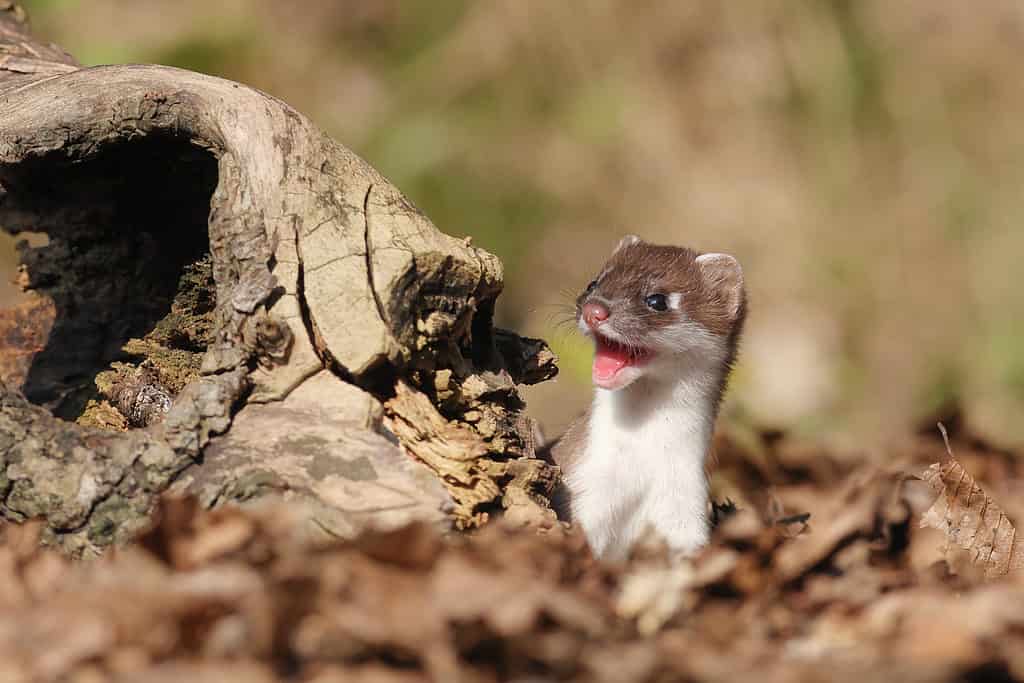
Stoats are aggressive and ambitious hunters
©Petr Muckstein/Shutterstock.com
If you’ve ever seen an ermine in person or in a picture, then you would know that it looks much like a weasel. It has a long body and neck, short legs, black eyes, round ears, and a rodent-like head from which delicate whiskers emerge. The coat of fur undergoes a remarkable transformation with the changing of the seasons. It transforms from brown and yellowish-white in the summer to almost pure white in the winter. The tip of the tail is also black. Weighing less than a pound in total, the ermine is a rather small species. The male ermine measures up to 12 inches in body length and another 5 inches with the tail included. Females tend to be slightly smaller on average.
With its sharp claws and teeth, the ermine’s small size is more than compensated by its rather tenacious behavior. Even much larger predators must be wary about attacking an ermine. Perhaps for reproductive reasons, males tend to be more dominant and aggressive than females. Shortly after achieving independence, they seek out large territories for themselves, taking them by force if necessary. The female, on the other hand, tends to stay in the same place as her birth. On average, an individual ermine can carve out a territory around 25 to 100 acres large. That is quite a bit of land for such a small animal, although the territory of the male and female sometimes overlap.
The ermine alternates between sleep and wakefulness throughout the entire day, but it most actively hunts during the night. With its slender and lithe body, it moves in an unusual zigzag pattern back and forth by bouncing off the ground with about 20 inches per leap. The sight of the ermine in winter leaping through the tall snow, occasionally sticking its head out, can be quite comical. Although mostly land-based, it is also a very competent swimmer and climber. The average ermine can end up traveling more than nine miles every single night. It is very diligent about looking through every single nook and cranny in search of food.
The ermine is an animal that does almost all of its hunting and foraging alone. It only comes together with other members of the species for the breeding season to copulate. The ermine seems to have a very limited set of vocalizations to communicate with each other. You will rarely hear the ermine make any loud noises besides hisses, screeches, and grunts as a warning or alarm. Instead, its most common form of communication is to emit a scent from the anal gland to mark territory and advertise their sexual availability to each other.
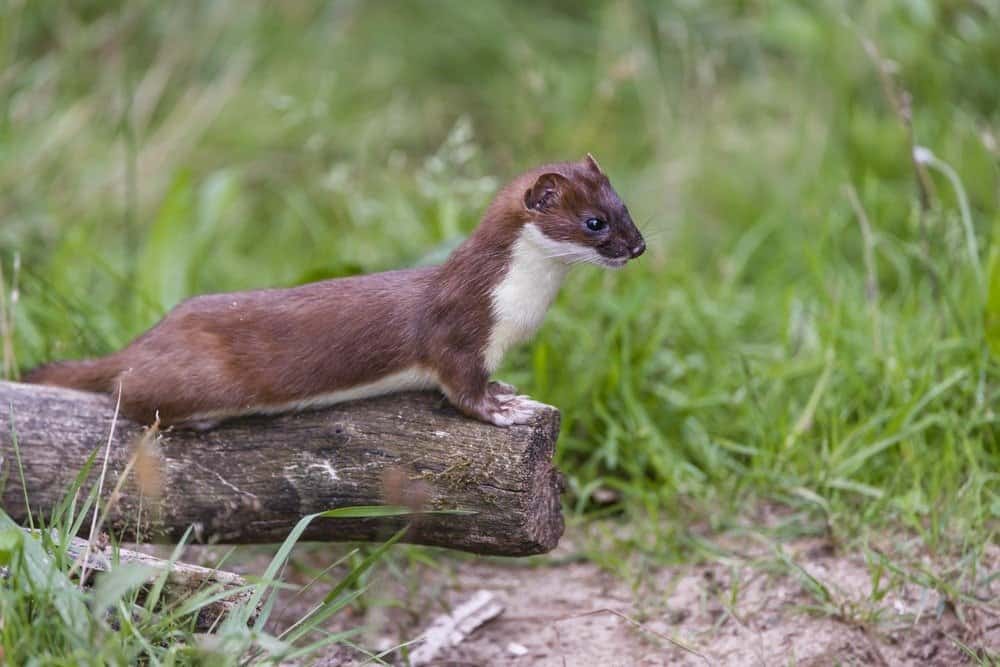
Male Ermine is a solo hunter.
©Bildagentur Zoonar GmbH/Shutterstock.com
Habitat
The natural range of the ermine covers a very large area. It includes a northern stretch of temperate and arctic territory that wraps around Eurasia and North America. This animal is found as far north as the Arctic Ocean and Greenland and as far south as California and Spain. It was also introduced to New Zealand in the 19th century in an effort to control the local rabbit population. However, instead of just culling rabbits, the ermine also consumed many local bird populations, driving population numbers down. For this reason, many New Zealanders consider it to be an invasive species.
The ermine’s primary place of habitation includes woodlands, marshlands, and any plains directly adjacent to them. Its natural territory almost never stretches into large open areas such as the Great Plains. The ermine will take up residence in any small enclosed it comes across, including tree roots, burrows, stone walls, and hollow logs. It is not particularly picky about the details of its living arrangements. The ermine does not have the ability to dig its own burrow. Instead, it either finds abandoned burrows or takes the place of the animal it just killed.
Diet

Ermines are carnivores and small rodents make up most of their diet.
©Colin Seddon/Shutterstock.com
The ermine’s diet consists primarily of small mammals such as rodents, shrews, and rabbits. It also mixes this up with frogs, fish, insects, birds, eggs, and whatever other meat it can find. The ermine is not afraid to attack prey just as big as itself, but it does require a different hunting strategy. To kill these larger prey animals, the ermine will seize it by the throat and bleed it to death. To kill smaller prey, by comparison, the ermine will sink its teeth into the base of the skull, killing it almost instantly. This species can be both a nuisance and a help to humans. On one hand, it can sometimes invite reprisals from farmers by attacking chickens. On the other hand, it also has the tendency to hunt rodents and other pests.
Predators And Threats
Despite its ferocious behavior, the ermine faces many threats from larger carnivores such as badgers, foxes, coyotes, eagles, hawks, owls, and even the fellow long-tailed weasel. But with its sharp teeth, big claws, and powerful musk that it emits from its anal glands, the ermine is more than a match for most predators and rarely the first choice of meal.
For many centuries, the ermine has been historically hunted by humans for its fur to create pelts. The white winter pelts were sometimes prized by European royalty during the Middle Ages. Although forests are sometimes cleared for agriculture or habitation, this is not enough to pose a significant threat to the health of the worldwide ermine populations.
Reproduction, Babies, And Lifespan
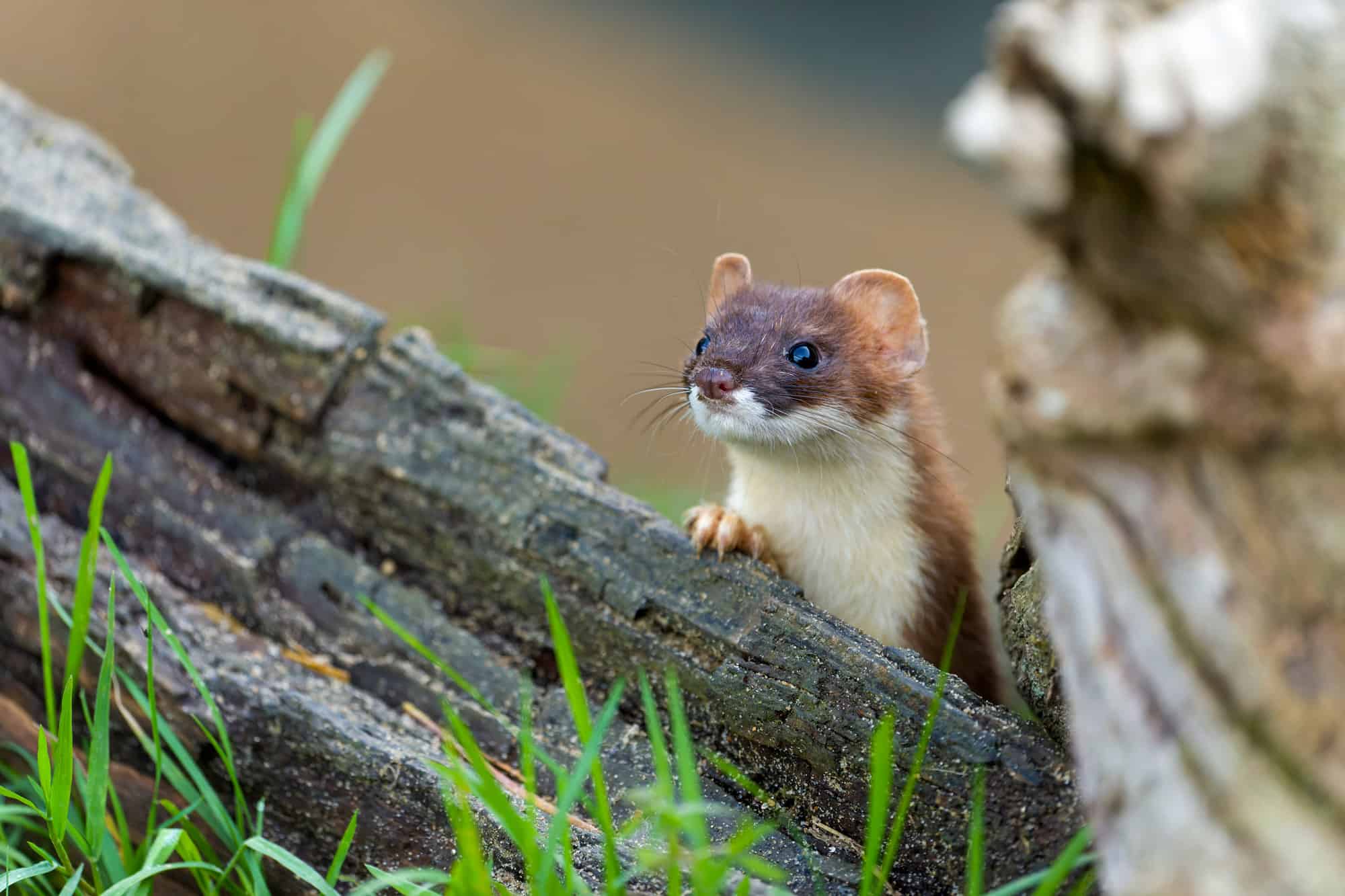
Baby Ermine
©iStock.com/MikeLane45
The ermine is a very promiscuous species that may have multiple mating partners throughout the breeding season (which usually lasts between the late spring and the early summer). The male will sometimes attempt to gain the favor of the female by bringing her freshly killed prey. Once they copulate, however, the father otherwise plays very little role in the actual development of the offspring.
Despite having multiple periods throughout the year, the female will only produce a single litter, born in April or May, after a gestation period of approximately 280 days. The gestation takes so long because the female has the ability to delay the implantation for a few months, perhaps due to food availability during the winter, with most of the embryonic development occurring within the last month of the pregnancy. She will likely become pregnant again before the previous offspring have even developed enough to leave the nest permanently.
The typical size of the litter is between four and nine individuals with as many as 18 offspring possible. The young kits, as they’re called, emerge from the womb with a coat of white fur and no eyesight. For the first few weeks of life, they are completely dependent on the mother for food and protection. It takes about two to three months before the ermine develops enough to begin hunting with its mother, but the kits will spend the entire first year of their lives learning how to properly survive in the wild.
Due to predation and disease with the young kits, the ermine’s average lifespan is just one or two years. However, if it can avoid early death, the maximum lifespan is around seven to 10 years in the wild. Males take about a full year to reach sexual maturity, whereas females reach sexual maturity much quicker at around 60 to 70 days.
Population
According to the IUCN Red List, which is the most comprehensive conservation tracker in the world, the ermine is a species of the least concern. This means population numbers are high enough that no special conservation efforts are needed to improve their condition. However, each distinct subspecies may vary by population numbers and conservation status. It is thought, for example, that there are nearly 500,000 ermines spread across the British Islands. It is not entirely known how many ermines live around the entire world.
View all 117 animals that start with EErmine FAQs (Frequently Asked Questions)
What is an ermine?
The ermine is a very slender carnivorous mammal that belongs to a larger group of weasels. It is also part of the Mustelid family. Apart from reproduction and child-rearing, this species has evolved to live and hunt alone, communicating almost exclusively through its scent glands.
What do ermine eat?
The ermine’s diet consists primarily of small mammals such as rodents and rabbits. Other potential prey also includes frogs, fish, insects, birds, eggs, and much more.
Where do ermines live?
The ermine inhabits forests and woodlands throughout much of the Northern Hemisphere of Eurasia and the Americas.
Is an ermine a mink?
The mink is not the same as the ermine, but rather a closely related semi-aquatic animal. There are two species of minks, the European mink, and the American mink. They are actually part of two separate groups. The European mink belongs to the genus Mustela along with the ermine. The American mink, on the other hand, belongs to a separate genus known as Neovison. It is the only currently living species within this genus.
What is the difference between a weasel and an ermine?
That depends on how you define a weasel. It can refer to the entire genus of Mustela to which the ermine belongs. But it can also refer to any of the individual species within this genus, including the long-tailed weasel, the least weasel, and the mountain weasel. Of these two, ermine can be described as a weasel in terms of its classification within the genus Mustela. In fact, an alternative name for the ermine is actually the short-tailed weasel. But many scientists think it is distinct enough in several characteristics to warrant a separate name, the ermine or stoat.
What Kingdom do Ermines belong to?
Ermines belong to the Kingdom Animalia.
How fast is an Ermine?
An Ermine can travel at speeds of up to 8 miles per hour.
Thank you for reading! Have some feedback for us? Contact the AZ Animals editorial team.
Sources
- Britannica, Available here: https://www.britannica.com/animal/ermine-mammal
- Animal Diversity Web, Available here: https://animaldiversity.org/accounts/Mustela_erminea/
- Adirondack Ecological Center, Available here: https://www.esf.edu/aec/adks/mammals/ermine.htm

